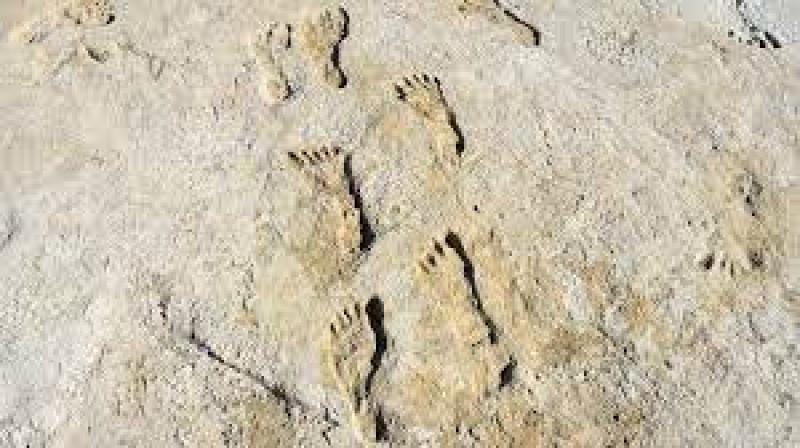New Mexico footprints are oldest sign of humans in Americas, research shows | Archaeology | The Guardian
By: the Guardian



Fossil footprints date back to between 21,000 and 23,000 years ago, upending previous theory that humans reached continent later
New research confirms that fossil human footprints in New Mexico are probably the oldest direct evidence of human presence in the Americas, a finding that upends what many archaeologists thought they knew.
The footprints were discovered at the edge of an ancient lakebed in White Sands national park and date back to between 21,000 and 23,000 years ago, according to research published on Thursday in the journal Science.
Justice for Neanderthals! What the debate about our long-dead cousins reveals about usRead more
The estimated age of the footprints was first reported in Science in 2021, but some researchers raised concerns about the dates. Questions focused on whether seeds of aquatic plants used for the original dating may have absorbed ancient carbon from the lake - which could, in theory, throw off radiocarbon dating by thousands of years.
The new study presents two additional lines of evidence for the older date range. It uses two entirely different materials found at the site, ancient conifer pollen and quartz grains.
The reported age of the footprints challenges the once conventional wisdom that humans did not reach the Americas until a few thousand years before rising sea levels covered the Bering land bridge between Russia and Alaska, perhaps about 15,000 years ago.
"This is a subject that's always been controversial because it's so significant - it's about how we understand the last chapter of the peopling of the world," said Thomas Urban, an archaeological scientist at Cornell University, who was involved in the 2021 study but not the new one.
Thomas Stafford, an independent archaeological geologist in Albuquerque, New Mexico, who was not involved in the study, said he "was a bit skeptical before" but now is convinced.
The new study isolated about 75,000 grains of pure pollen from the same sedimentary layer that contained the footprints.
"Dating pollen is arduous and nail-biting," said Kathleen Springer, a research geologist at the US Geological Survey and a co-author of the new paper.
Ancient footprints of any kind can provide archaeologists with a snapshot of a moment in time. While other archeological sites in the Americas point to similar date ranges - including pendants carved from giant ground sloth remains in Brazil - scientists still question whether such materials really indicate human presence.
"White Sands is unique because there's no question these footprints were left by people, it's not ambiguous," said Jennifer Raff, an anthropological geneticist at the University of Kansas, who was not involved in the study.
Explore more on these topics
- Archaeology
- New Mexico
- Fossils
- Americas
- news
Trolling, taunting, spamming, and off topic comments may be removed at the discretion of group mods. NT members that vote up their own comments, repeat comments, or continue to disrupt the conversation risk having all of their comments deleted. Please remember to quote the person(s) to whom you are replying to preserve continuity of this seed. Any use of the phrase "Trump Derangement Syndrome" or the TDS acronym in a comment will be deleted.




Another discovery that moves the date of humans in the Americas back thousands of years. There are others discoveries that are even older but need more verification.
There is no doubt about the footprints being human.
they didn't want to get their moccasins muddy...
Yeah, they were pretty serious about their dress moccasins...LOL
if there had been knuckle dragging marks on the outside of the footprints, it might have been evidence of the first appearance of a subspecies especially prevalent on this continent today.
LMAO, perfect.
Awesome.
Yeah, it really is awesome when you think that they are still in perfect condition after 20,000 plus years.
Fascinating, the amount and various sizes of footprints would suggest that the first Americans crossed into North America at least several thousand years earlier. Maybe they came by sea and not a land bridge.
IMO, and there is a lot of back up for this is that both the land bridge from Siberia and also the ''kelp highway'' Indigenous using boats to move down the west coast of the US. The third leg is via water from the Pacific where there is a lot of proof of Polynesians traveling to South America and Indigenous from Columbia traveling into the Pacific. I think that all of the above are part of the settling of the Americas.
Thanks, agree, history is rarely as simple as some try to make it.